
How to Deal with Cherry Tree Leaf Scorching in Hot Weather: Expert Tips
Summer’s heat can be a cherry tree’s worst enemy, causing its leaves to scorch and wilt under intense sunlight. How to deal with cherry tree leaf scorching in hot weather is a common concern for gardeners, but with the right knowledge and care, you can help your tree survive and thrive. Whether you’re noticing crispy edges, brown spots, or general leaf decline, understanding the causes of leaf scorching is the first step in combating it. In this article, we’ll dive into expert tips and strategies to protect your tree from the heat and ensure it stays healthy throughout the warm season.
Table of Contents
ToggleWhat Causes Cherry Tree Leaf Scorching? 

Cherry tree leaf scorching can be caused by several environmental and care-related factors. Understanding these causes is the first step to preventing and treating this issue. Here are the main reasons why your cherry tree’s leaves might be turning brown and crispy:
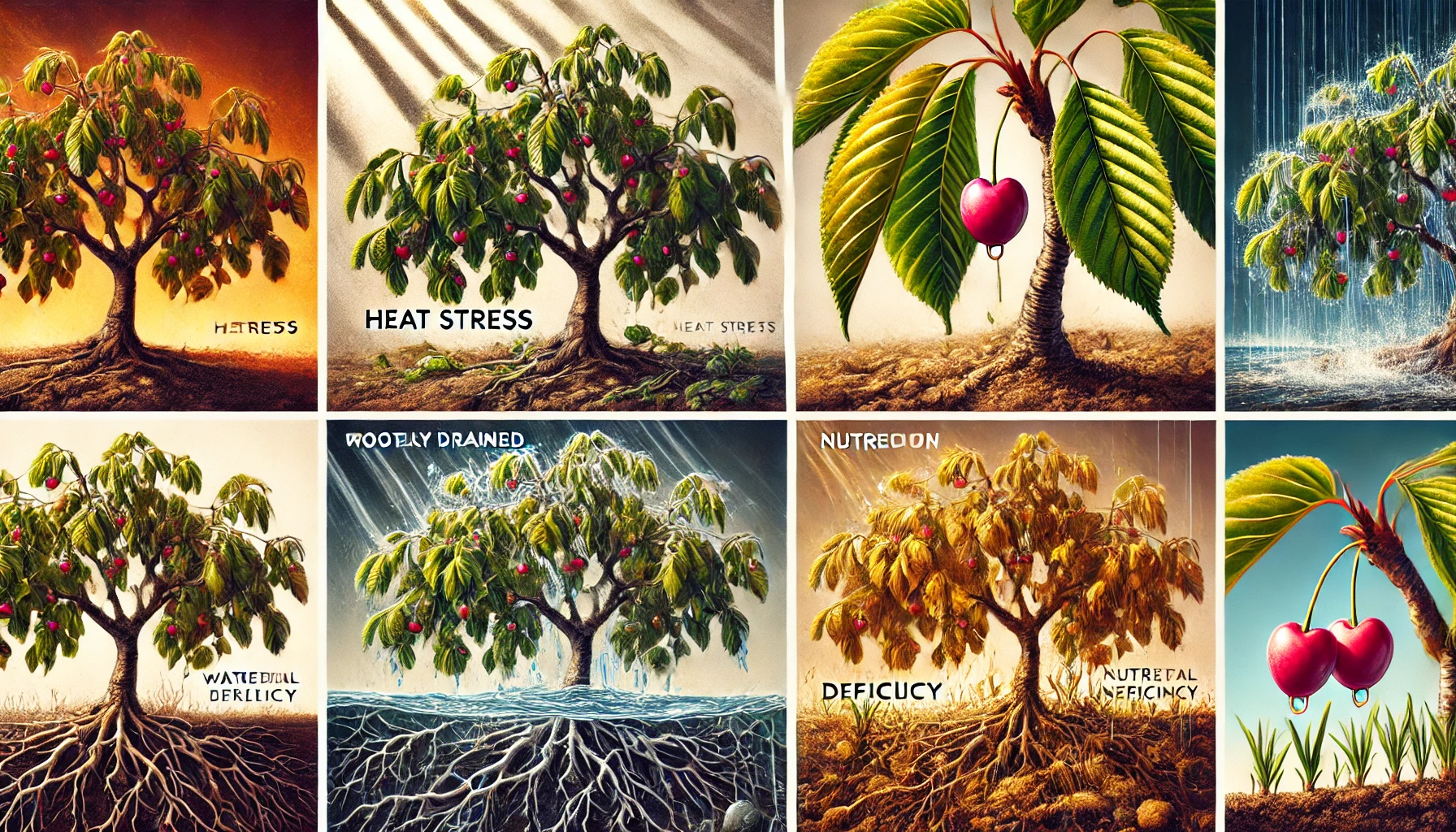
- Heat Stress
: Extreme temperatures, especially during hot summer months, can cause the leaves to scorch. Cherry trees are sensitive to prolonged heat, and without adequate water, the leaves dry out and burn.
- Watering Issues
: Both overwatering and underwatering can stress the tree, leading to leaf scorch. Too much water can drown the roots, while too little prevents the tree from absorbing essential nutrients.
- Poor Soil Drainage
: If your cherry tree is planted in soil that doesn’t drain well, the roots can become waterlogged, leading to oxygen deprivation. This prevents proper leaf growth and causes scorching.
- Nutrient Deficiencies
: Lack of essential nutrients, particularly potassium, magnesium, and nitrogen, can make leaves more susceptible to scorching. A balanced fertilizer can help keep your tree healthy.
- Pests and Diseases
: Insects like aphids or fungal infections can damage the leaves, causing them to wilt and scorch. Regular inspection and treatment can prevent this from happening.
By identifying these factors early, you can take action to prevent further damage and keep your cherry tree thriving.
Signs of Cherry Tree Leaf Scorching 

Cherry trees can be a stunning addition to your garden, but leaf scorching can quickly take a toll on their beauty. Here’s what to look for:
- Brown or Blackened Edges
One of the first signs of scorching is the appearance of dry, brown, or black edges along the leaves. This typically starts at the tips and moves inward, signaling stress from heat or lack of water.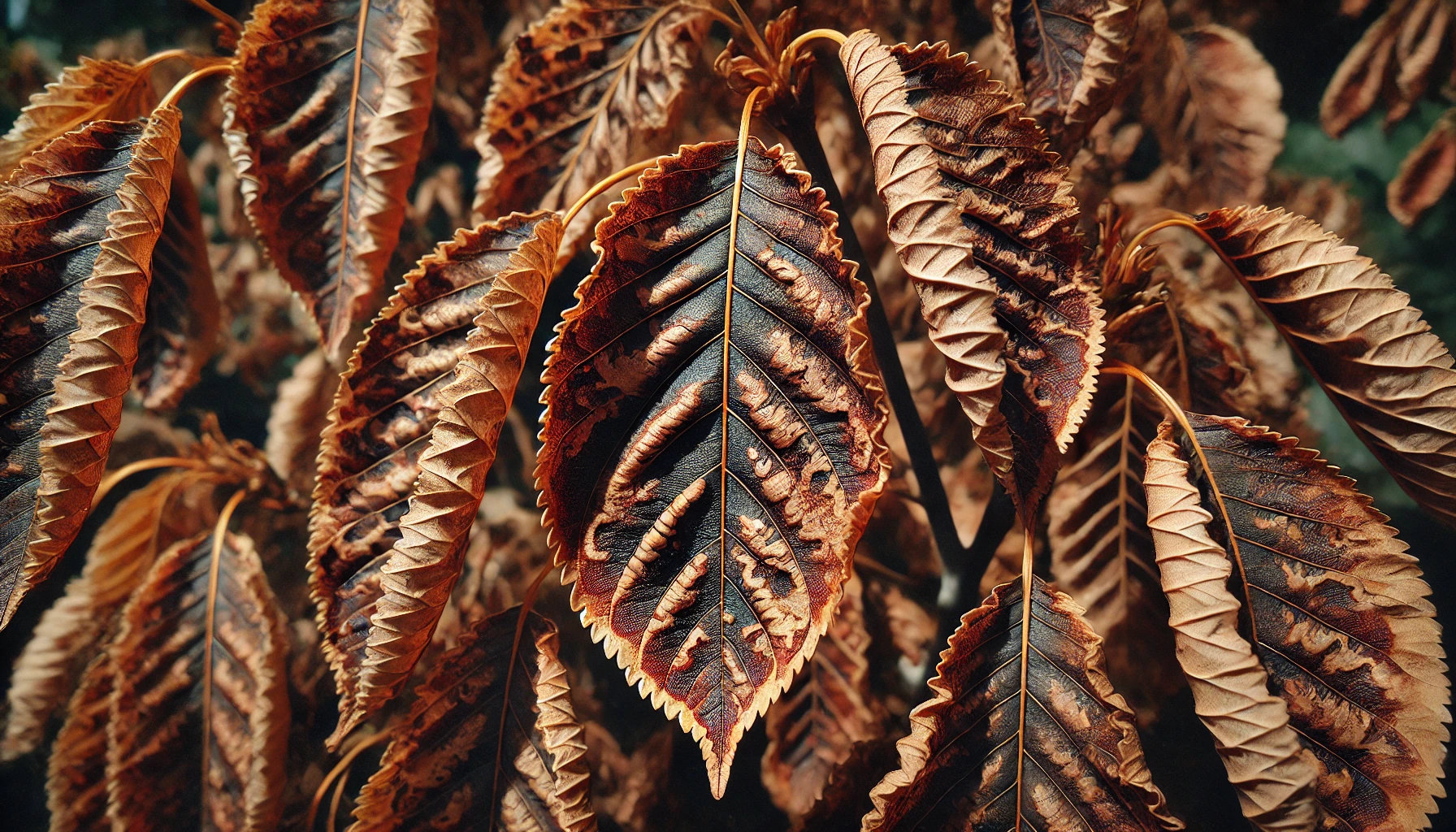
- Wilting or Curling Leaves
When a cherry tree is stressed, the leaves may curl or wilt. This is often caused by extreme heat, drought, or poor water drainage, which can leave the tree struggling to maintain moisture. - Yellowing or Faded Leaves
If the leaves turn yellow or start to fade, it can be a sign that your cherry tree is not getting enough nutrients or is being overexposed to intense sun. This weakens the tree’s ability to photosynthesize properly. - Cracked or Brittle Leaves
Excessive heat or inconsistent watering can cause cherry tree leaves to become brittle and crack. This makes them more prone to breaking or falling off prematurely. - Spots or Scorched Patches
Dark, scorched spots or patches appear when the tree’s leaves have been burned by intense sunlight. This is especially common during the hottest months or when trees are not properly acclimatized.
By keeping an eye on these key symptoms, you can identify leaf scorching early and take action to help your cherry tree recover.
Expert Tips on Preventing Leaf Scorching 

Leaf scorching can be a serious concern for many plants, but with the right care, you can prevent it from happening. Here are expert tips to help keep your plants healthy and vibrant:
1. Choose the Right Plant for Your Environment 
Make sure your plants are suited to the climate and light conditions in your home or garden. Some plants thrive in full sun, while others need shade.
2. Water Properly 
Water your plants early in the morning or late in the evening. This helps prevent water droplets on leaves from acting like magnifying glasses, intensifying the sun’s heat and causing burns.
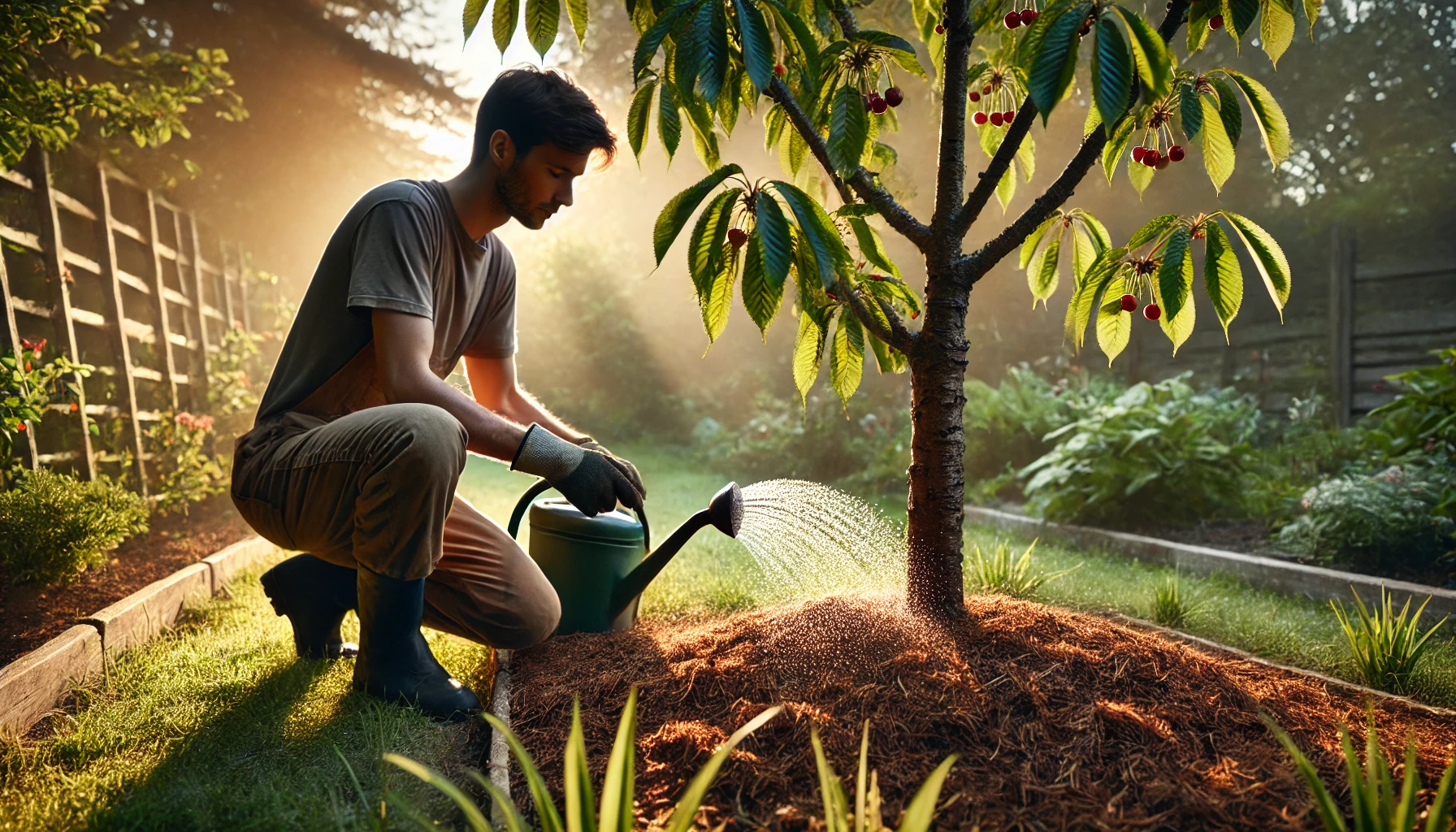
3. Use Mulch for Moisture Retention 
A layer of mulch helps keep soil moisture consistent and protects plant roots from extreme temperatures. This reduces stress on the plant and prevents leaf scorch.
4. Avoid Overfertilizing 
Excess fertilizer, especially nitrogen, can make plants more susceptible to scorching. Stick to a balanced, slow-release fertilizer to avoid stressing your plants.
5. Increase Humidity 

Dry indoor air can contribute to leaf scorch. Keep the humidity levels in check, especially during hot, dry seasons. A small humidifier or a water tray can help!
6. Provide Shade During Peak Sunlight 

For sensitive plants, consider providing temporary shade during the hottest part of the day. Shade cloths or umbrellas can give them relief from intense sun.
By following these simple tips, you can keep your plants happy and healthy, free from the damaging effects of leaf scorching!
How to Treat Cherry Tree Leaf Scorching Once It Happens 

If your cherry tree’s leaves are showing signs of scorching, don’t panic! With the right steps, you can help restore your tree to health. Here’s how to treat cherry tree leaf scorching effectively:
- Water Deeply
Scorched leaves often indicate stress due to insufficient water. Ensure your tree gets deep, consistent watering, especially during dry spells. Aim for at least 1 inch of water per week, focusing on the root zone. - Mulch Around the Base
Add a 2-3 inch layer of mulch around the tree base to retain moisture and regulate soil temperature. Be sure to keep mulch a few inches away from the trunk to prevent rot. - Check for Root Issues
Inspect the soil for signs of compactness or poor drainage. If needed, aerate the soil to allow better water penetration. Poor drainage can lead to root stress, which worsens leaf scorch. - Prune Damaged Leaves
Trim any scorched or dead leaves to improve airflow and prevent further stress. Be cautious not to over-prune, as this can cause more harm than good.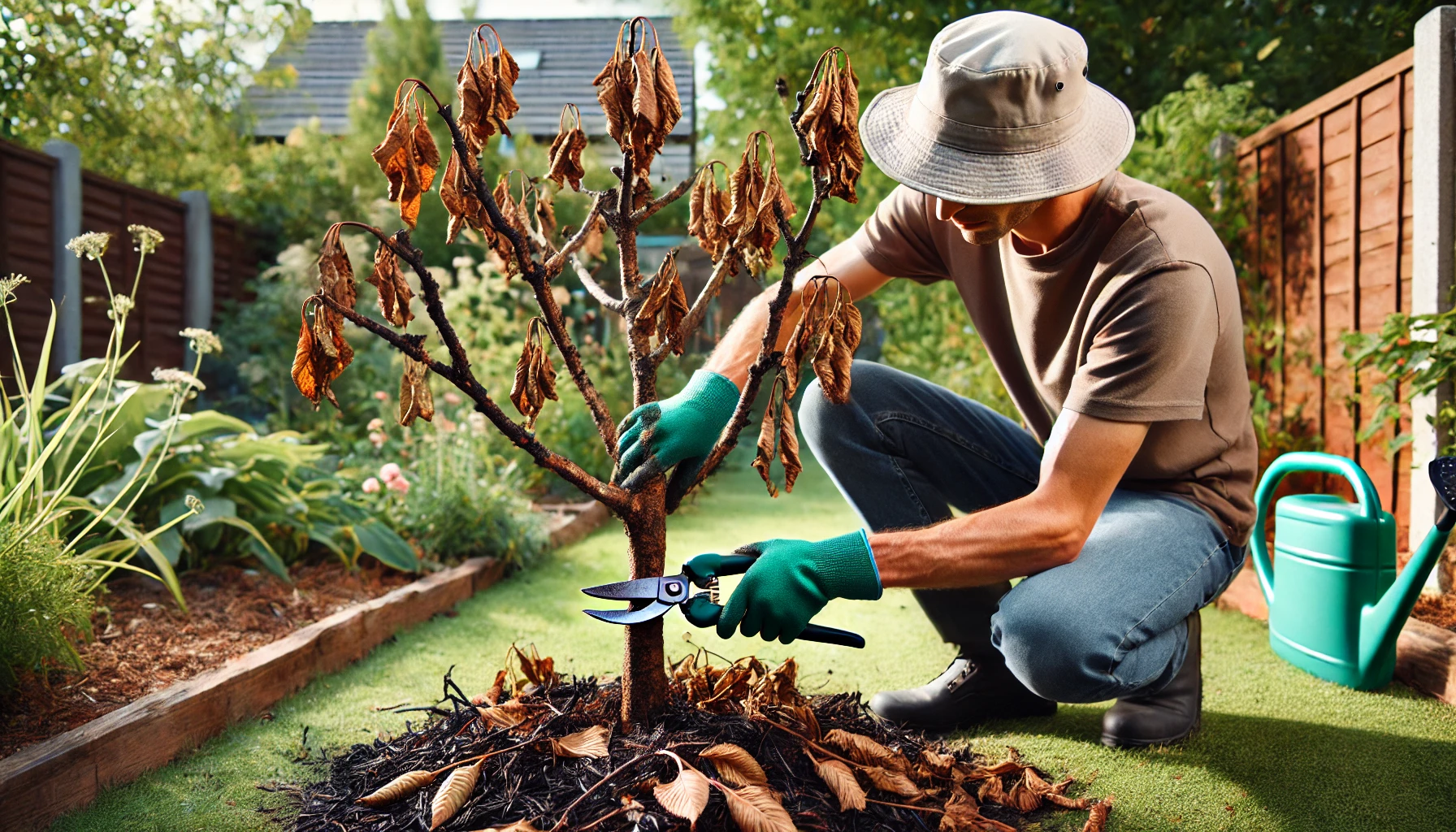
- Fertilize Carefully
Apply a balanced, slow-release fertilizer in early spring to promote healthy growth. Avoid fertilizing during the hottest months, as this can stress the tree further. - Provide Shade During Heatwaves
If scorching happens during a heatwave, consider providing temporary shade using a shade cloth. This helps reduce stress and protects the leaves from further damage.
By following these steps, you can give your cherry tree the care it needs to recover and thrive!
Long-Term Care: Ensuring Your Cherry Tree Thrives in Hot Weather 

Cherry trees can thrive in hot weather with the right care. Here’s how to ensure your tree remains healthy and productive through the heat:
- Water Deeply, Regularly
In hot weather, your cherry tree needs consistent moisture. Water deeply at the base of the tree, ensuring the soil around the roots is thoroughly soaked. Aim for at least once a week, or more frequently during extreme heat, to keep the tree hydrated. - Mulch to Retain Moisture
Add a 3-4 inch layer of mulch around the base of the tree. Mulch helps retain soil moisture, regulate temperature, and prevent weeds. Keep the mulch a few inches away from the trunk to avoid rot. - Proper Pruning
Regular pruning helps improve air circulation, reducing heat stress. Remove any dead or damaged branches, and thin the canopy to allow sunlight to reach the tree’s interior. Pruning also promotes healthier growth. - Shade During Peak Heat
If temperatures soar above 90°F (32°C), consider providing temporary shade. Use shade cloth or a well-positioned tarp to protect your cherry tree from the scorching midday sun. This reduces stress and helps your tree maintain its health.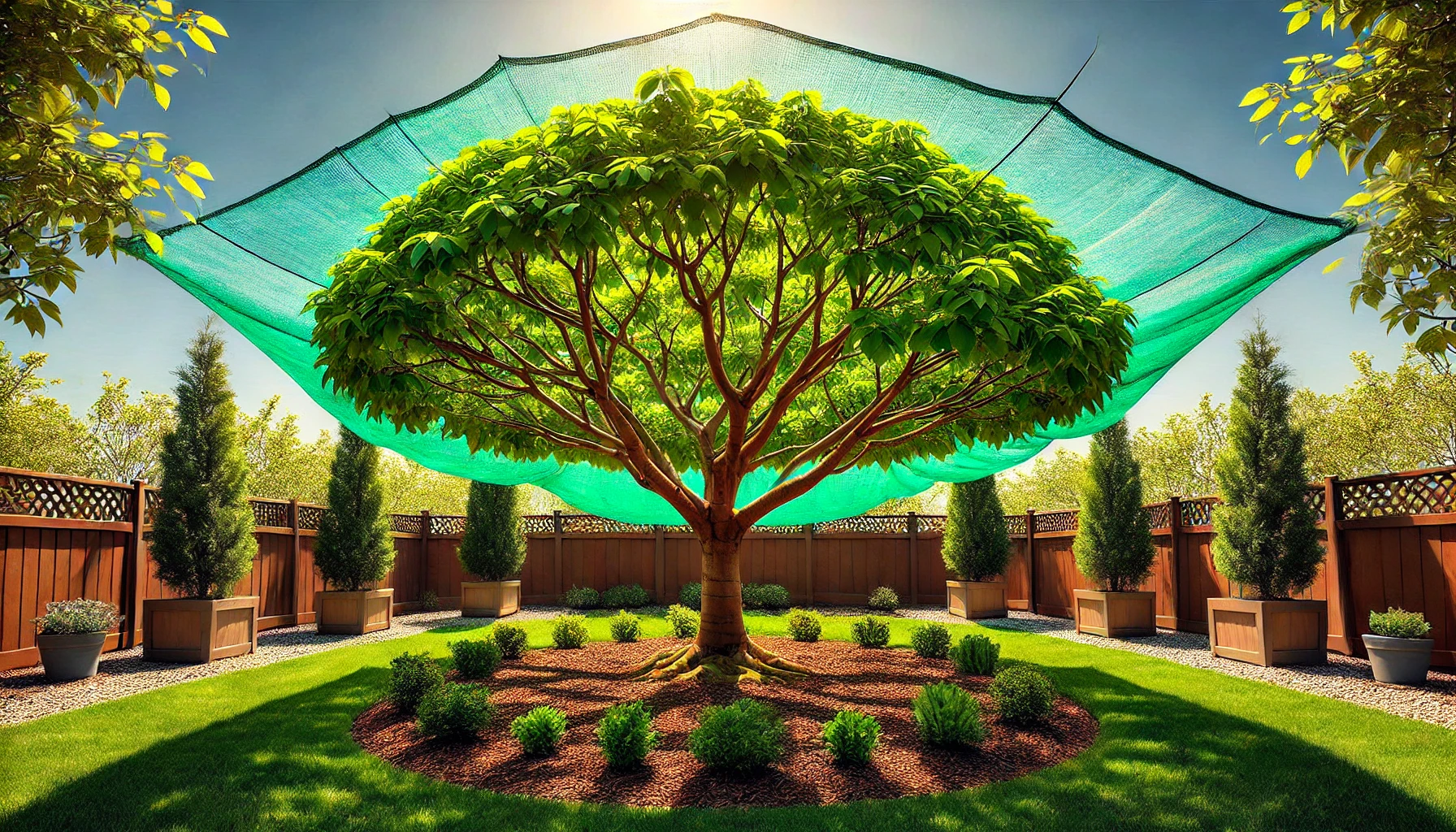
- Fertilize Lightly
Over-fertilizing during hot weather can stress your tree. Use a slow-release fertilizer or organic compost in early spring, before the hottest months arrive. Avoid heavy fertilization during peak heat to keep your tree’s roots stable. - Monitor for Pests and Diseases
Hot weather can encourage pests and diseases. Regularly inspect your tree for any signs of insects, such as aphids or spider mites, and treat them promptly with organic pest control. Preventing pests is key to keeping your tree thriving.
By following these tips, you can ensure your cherry tree remains healthy, productive, and resistant to the challenges of hot weather!
Conclusion

Dealing with cherry tree leaf scorching in hot weather can be challenging, but with the right care and attention, you can protect your tree from the harmful effects of intense heat. By understanding the causes of scorching, recognizing the signs early, and implementing expert tips like proper watering, mulching, and shade protection, you can help your tree thrive even in the hottest months. Regular maintenance and monitoring are essential to ensure long-term health and resilience.
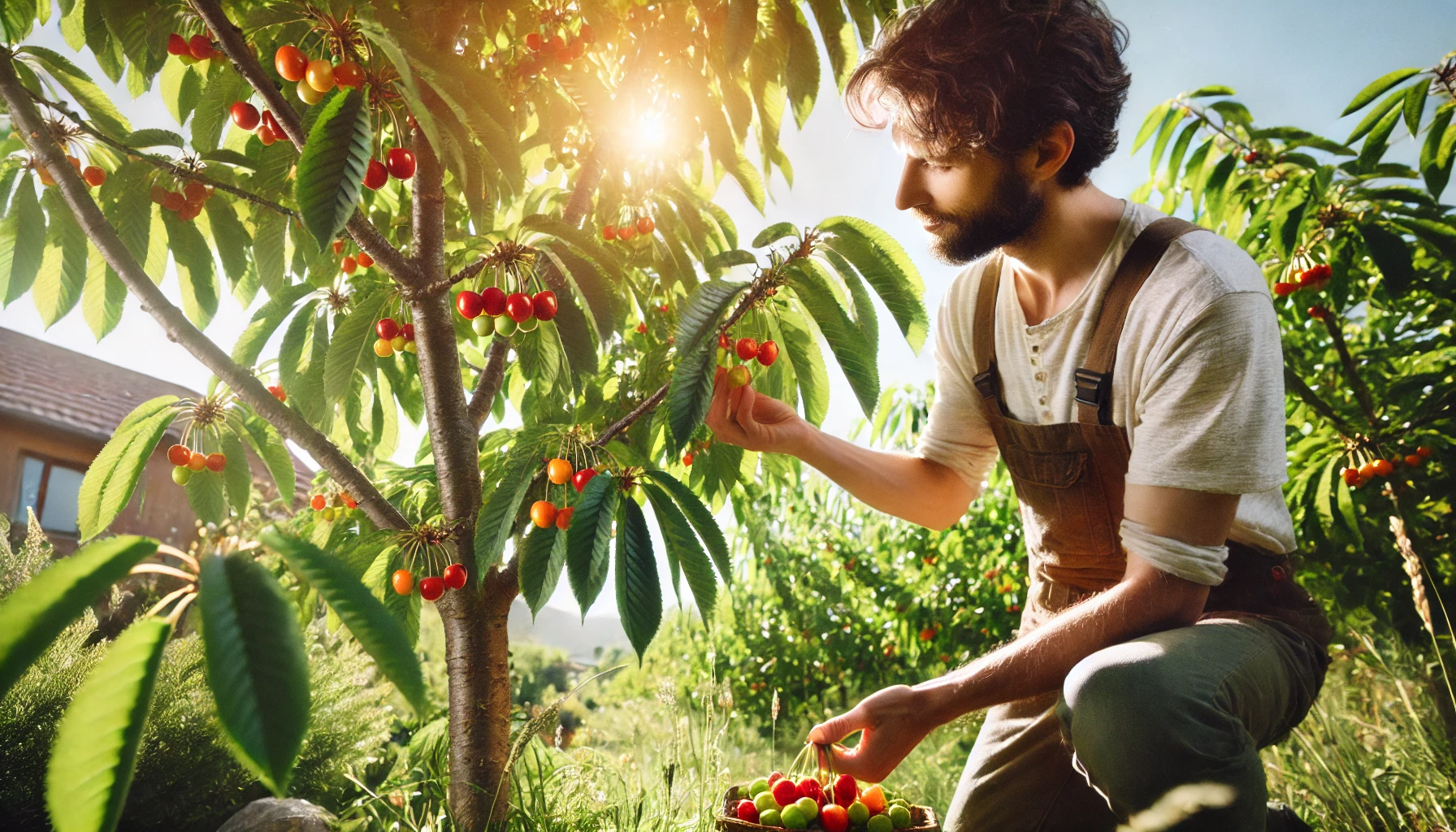
Remember, your cherry tree’s vitality depends on consistent care and prompt action when problems arise. By following these expert tips, you’ll give your cherry tree the best chance to recover and flourish, providing you with healthy, vibrant foliage year after year. Stay proactive, and your cherry tree will reward you with beauty and bounty for seasons to come!
Frequently Asked Questions(FAQ)
What causes cherry tree leaf scorching in hot weather?
Cherry tree leaf scorching is primarily caused by excessive sun exposure, lack of water, nutrient deficiencies, and strong winds. Hot temperatures can stress the tree, leading to dehydration and damage to the leaves.
How can I prevent leaf scorching on my cherry tree?
To prevent scorching, ensure your cherry tree is well-watered, especially during hot weather. Use mulch around the base to retain moisture, provide shade protection during peak heat, and maintain healthy soil with proper nutrients. Pruning to reduce sun exposure can also help.
What are the signs of leaf scorching on cherry trees?
Signs of leaf scorching include brown or crispy edges on the leaves, yellowing between veins, curled or wilting leaves, and early leaf drop. The damage is often concentrated on the outer leaves and can worsen in extreme heat.
Should I water my cherry tree more often in hot weather?
Yes! During hot weather, cherry trees require more frequent watering to prevent dehydration. Water deeply and consistently to ensure the roots are well-hydrated. However, avoid overwatering, which can also harm the tree.
Can pruning help with leaf scorching?
Yes, pruning can help! Removing damaged or scorched leaves can improve air circulation and reduce stress on the tree. However, it’s important to prune carefully and avoid cutting too much, as this can further weaken the tree.
What should I do if my cherry tree leaves are scorched?
If you notice scorched leaves, water your tree thoroughly and use a balanced fertilizer to boost its health. Remove any damaged leaves to prevent further stress, and consider using shade cloth or providing more protection from the sun during the hottest part of the day.
Is it too late to save a cherry tree with scorched leaves?
It’s never too late to help your cherry tree recover! While severe scorching may cause long-term damage, proper care such as adequate watering, nutrient management, and protective measures can help the tree bounce back and thrive in the future.
Can I protect my cherry tree from scorching in the future?
Yes! For long-term protection, create a regular care routine that includes proper watering, mulching, and soil management. You can also plant your cherry tree in a location with partial shade or use shade cloth during extreme heat to prevent future leaf scorching.














